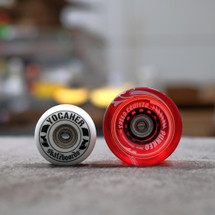Posted by Yocaher Skateboards on Mar 8th 2019
What Durometer Means
The skateboard wheel has come a long way since its earliest days. Back then, wheels were made of either metal or clay. Everything changed when urethane wheels hit the market in the 1970s, and it is still the material of choice for manufacturers today. Urethane wheels are not all the same, though.
Wheels differ from one another in many ways. Skateboarding wheels are typically smaller than longboarding wheels, for example. They are also typically much harder than longboarding wheels as well, but what does that really mean? Let’s look a little closer at what we actually mean when we describe a wheel’s hardness.
Urethane Varies
Urethane – short for polyurethane – is an elastic polymer, also called an elastomer. It has unique qualities that make it perfect for skateboard and longboard wheels. It is durable, and it has excellent rebound properties that help soften the jolts from uneven or rough surfaces. It also doesn’t melt when heated, so it withstands the friction of high-speed riding.
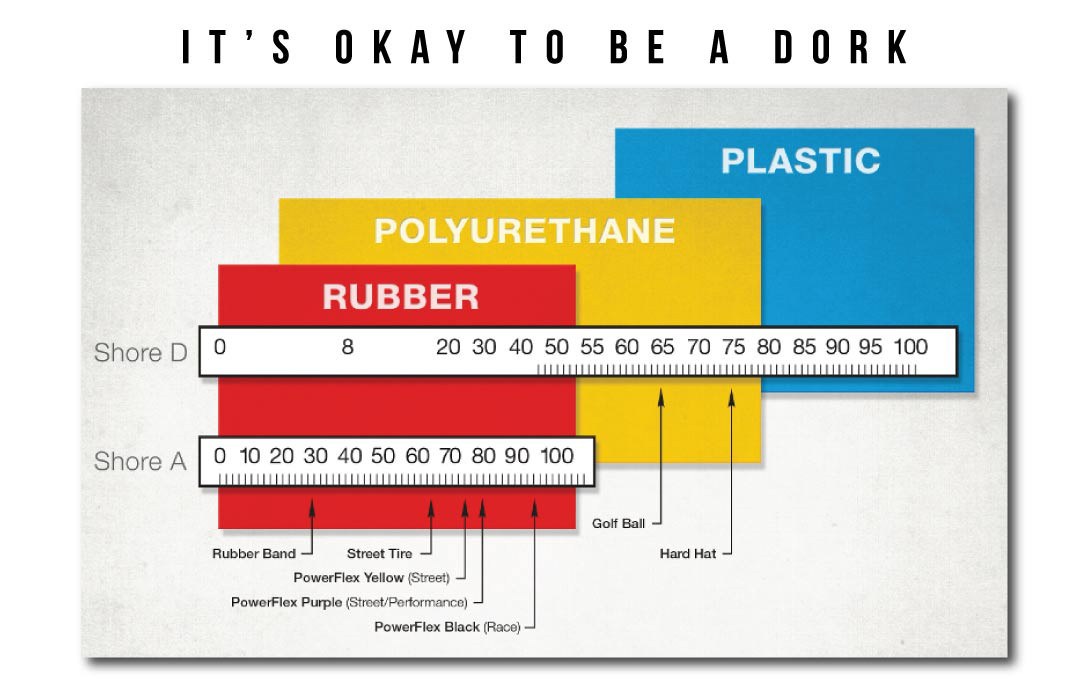
Wheel manufacturers use a variety of urethane formulas to address the needs of different riders. Many of those differences require explanations and descriptions. Other than size, the only characteristic of a urethane wheel that we can actually put a number on is hardness. The hardness of a wheel is normally given as a number followed by the letter A. Higher numbers mean harder materials on the scale, and the letter is the scale that is being used. We call that number and letter combination a wheel’s durometer.
Durometer Means Hardness
The words durometer and hardness mean the same thing: how hard a wheel is. To understand what these terms mean to urethane wheels, it helps to know their history first. When elastomers first became available in the early 1900s, there was no instrument that could test them accurately. Albert Shore invented the first device to test elastomer hardness in 1915, and he called it a durometer. These devices are still called Shore durometers today. So durometer can mean either the hardness of the wheel or the device used to measure it.

To measure hardness, a Shore durometer presses a cone-shaped metal rod into the material and measures how much force is required to cause an indentation. As harder materials became available, Shore had to make changes to his durometer. He altered the shape of the metal rod and the type of spring he used, creating new scales of measurements. The original scale became the “A” scale, and it is the one we use to measure urethane wheels.
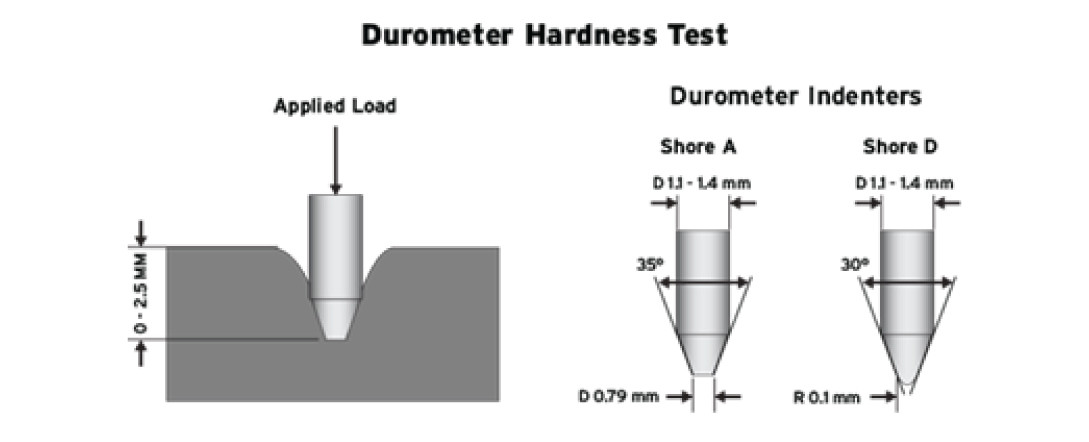
The Other Scales
The letters of the durometer scales get higher as the materials being tested get harder. The next scale up from skateboard wheels is the B scale, then the C and D scales. The need to test elastomers softer than the A scale came up later, so Shore invented the O and the OO scales. Again, the only scale that matters to urethane wheels is the A scale, though some wheel manufacturers use the B scale.
The numbers on the A scale run from 5 (softest) to 100 (hardest). When a manufacturer gives the hardness of a wheel as 101A, it is technically incorrect. You can be sure the wheel is extremely hard, but the value does not really mean anything. The urethane should measure about 86 if tested on the B scale, but you can’t be sure of that without testing it. The urethane in Yocaher wheels does not measure above 99A.
Choosing Your Durometer
The durometer (hardness) of the wheels you choose to ride will have a drastic effect on the performance of your setup. In truth, trying to use a skateboard or longboard wheel for a riding style it was not designed for can be dangerous. And even if it doesn’t cause an accident, it can still hinder what you can do on your board. Using the right wheel for the job can actually make it easier for you to skate the way you want to.
Skateboarding Wheels
Skateboard wheels are almost always at the upper extreme of the A scale, meaning they are extremely hard. Wheels gain more traction as they get softer, but traction is the enemy of skateboarders. Hard wheels lose traction much more easily than soft wheels, allowing them to slide along obstacles without slowing the rider down.
They also make powerslides, reverts, shuvits and many other trick variations possible.
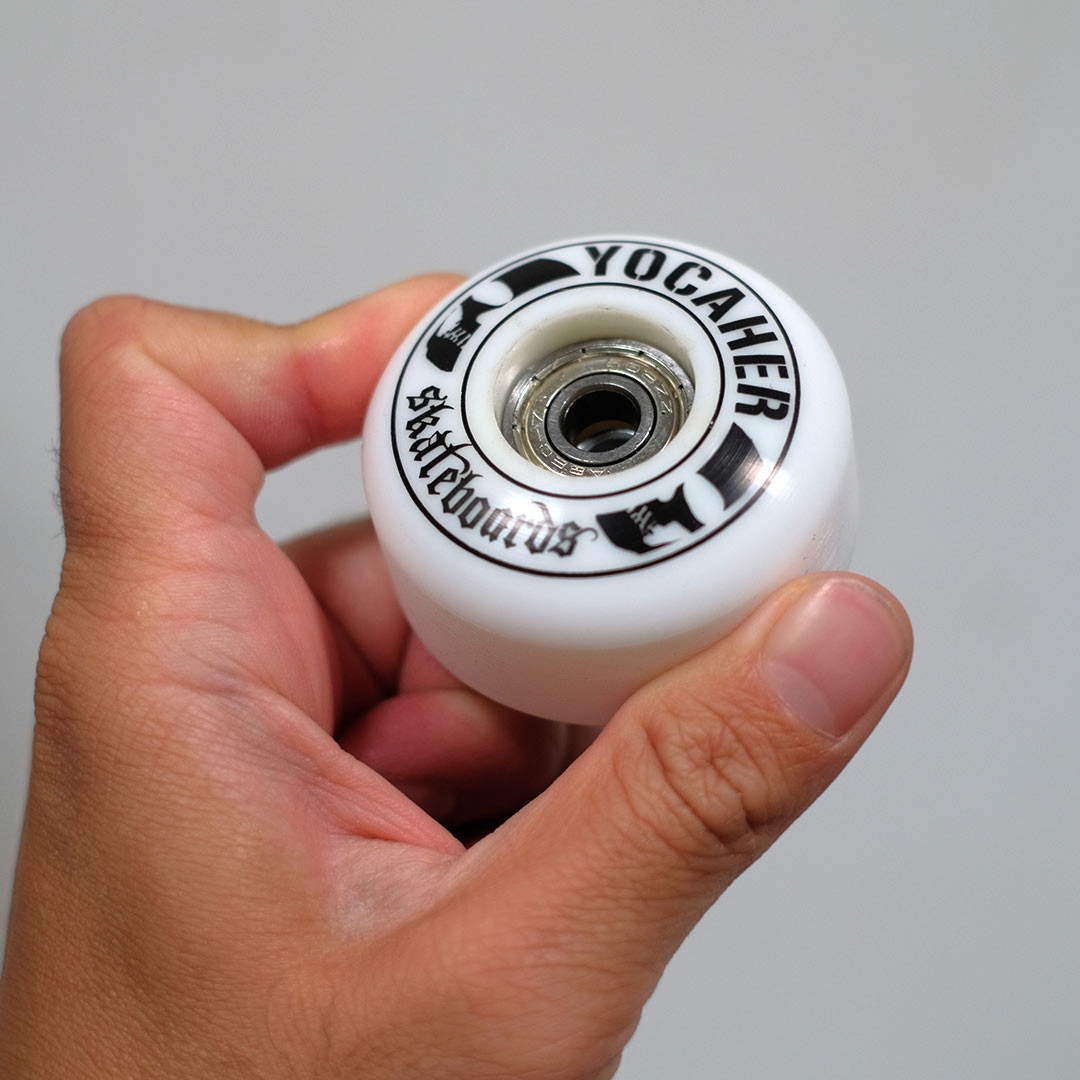
How hard a skateboard wheel should be is strictly a matter of taste, but most skateboarders prefer wheels above 97A. Yocaher skateboard wheels all have a perfect 99A durometer, so you can choose your preferred size and color and rest easy knowing you’re getting the right wheel.
Longboarding Wheels
Whether cruising, carving or bombing hills, longboarders place unique demands on their wheels. Unlike skateboarders, longboarders prize traction in a wheel above many other traits.
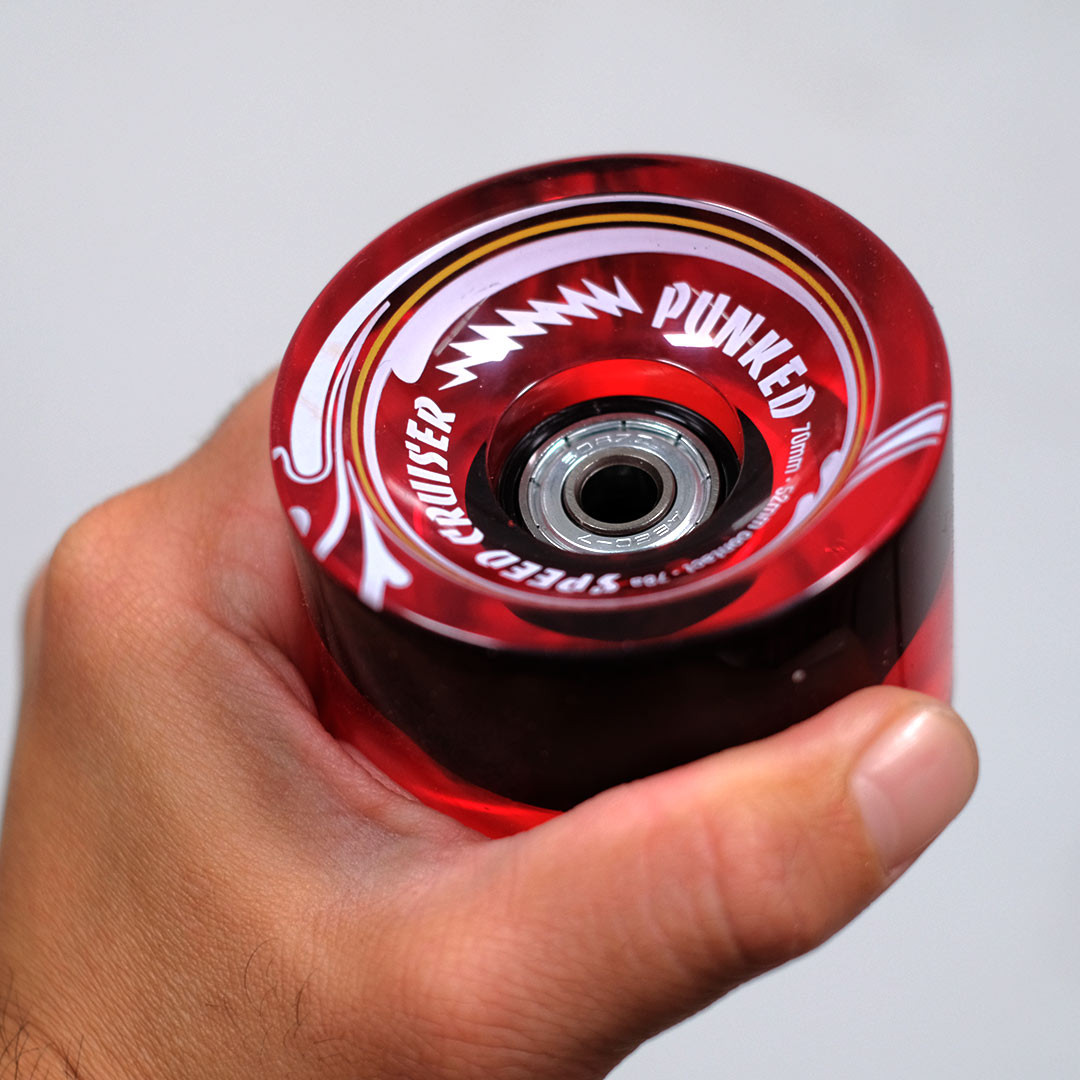
Then again, too soft a wheel would begin to slow down the ride. Overly soft wheels prevent the slides that freeriders enjoy and downhill riders need to check their speed. Yocaher longboard wheels are all 78A durometer – soft enough to provide a cloud-like cruise, but hard enough for some buttery slides when needs be.
Putting it All Together
Regardless of what type of skating you like to do, the hardness of your wheels will have a profound impact on how you do it. Durometer isn’t the only wheel characteristic you need to take into account, though. A wheel’s height, contact patch and formulation will all contribute to its performance. But nothing else affects the way a wheel skates like durometer does.
Just remember, the hardest wheels are meant for street, park and ramp skating. Their hardness allows skaters to break traction at will. Softer wheels are great for longboarding, but there is sometimes too much of a good thing.
Yocaher does not produce extremely hard or soft wheels. We prefer to keep it simple and honest. Your Yocaher complete came with the perfect durometer wheels for its intended uses. When their time is up, replace them with another set of Yocaher wheels to renew the smooth road-feel your board had when it was new.
On that note, check out our wheel selections HERE

